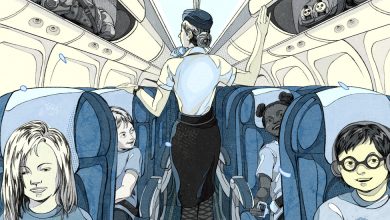Bird Flu May Have Caused Seal Strandings

The highly pathogenic avian influenza strain that has whipped through flocks of domestic poultry and wild birds this year may also be to blame for a spike in seal strandings in Maine, U.S. officials said on Wednesday.
Samples from four recently stranded seals — all of which died or were sick enough to require euthanasia — tested positive for the virus.
The strain, officially known as Eurasian H5N1, primarily affects birds. After causing outbreaks in Europe, Africa, the Middle East and Asia, the virus arrived in North America late last year and quickly spread to commercial poultry farms and along migratory bird routes.
The recent outbreaks involving the latest version of the virus have taken a much greater toll on wild birds than previous cycles did. And that has put carnivores and scavengers that feed on wild birds and their carcasses at risk. Scientists have now found the virus in a variety of wild mammals in North America, including foxes, bobcats, skunks and raccoons.
“The seal is the first marine mammal that we’ve seen on the spillover end,” Dr. Julianna Lenoch, a national wildlife disease program coordinator for the U.S. Department of Agriculture, said at a news briefing on Wednesday. “But this is not unexpected to have bird flu move into mammalian species on occasion.”
Workers with Marine Mammals of Maine, an organization that responds to reports of stranded sea creatures, began noticing an unusually high number of stranded seals last month. From May 10 to July 4, 92 gray and harbor seals were reported stranded in Maine.
Many of the seals were found dead. The current rate of dead seal strandings is roughly three times as high as normal, according to the National Oceanic and Atmospheric Administration. Other stranded seals were ill, with symptoms that included lethargy, sneezing and coughing. Some also had seizures — a symptom that has been reported in fox kits infected with avian influenza.
Marine Mammals of Maine sent samples from eight stranded seals to Tufts University for laboratory testing, Lynda Doughty, the organization’s executive director, said at the briefing. Four tested positive for the virus.
Most of the strandings so far have been reported in mid-to-southern Maine. “But there is the potential for this to spread across our coast as live animals move,” said Ainsley Smith, the coordinator for stranded marine mammals at N.O.A.A.’s Greater Atlantic regional fisheries office.
Viruses have been responsible for other mass stranding events among marine mammals, and previous versions of avian influenza have caused fatal outbreaks in seals. Scientists suspect that the seals, like other mammals, catch the virus after eating infected birds.
Seals can spread at least some versions of the flu to other seals. However, there is not yet any evidence that this has happened in Maine, said Bryan Richards, the emerging disease coordinator at the U.S. Geological Survey’s National Wildlife Health Center.
“With all of the scavenging mammals, and now with seals, I don’t think we have any evidence at all suggesting that each individual animal is anything other than, literally, a dead-end host,” he said.
Although the risk to humans remains low, the infection of mammals increases the odds that the virus could mutate in ways that make it more likely to pose a danger to people. Versions of avian flu that have been isolated from seals during previous outbreaks have shown signs of adaptation to mammals.
In the past, similar versions of bird flu have tended to peter out in the summer, when temperatures rise. It is too soon to say whether that will happen this year, Dr. Lenoch said: “This particular avian influenza is acting a little bit different, so we’re going to remain on high alert.”
In the meantime, officials recommended that people — and their pets — stay a safe distance away from seals and other marine mammals and report stranded animals to the local wildlife authorities.




